Similar presentations:
Blue carbon. Lecture 5
1.
Coastal Ecology I 2020-21Paloma Lucena-Moya
2.
How many colours ofCARBON do you know?
3.
Carbon colours…Brown Carbon
Our Changing
Carbon Cycle…
R. Griffis, NOAA Fisheries Service, 2011
4.
Blue carbon in the coastalecosystems of Bangladesh (IUCN M. Shahadat Hossain et al 2015)
5.
What is Blue Carbon?Blue carbon is the carbon dioxide (CO2) captured by the world’s ocean and
coastal ecosystems.
This carbon is stored in the form of biomass and sediments (mangroves, tidal
marshes, seagrass meadows, phytoplankton…)
Blue carbon is the most effective method for long term sequestration and
storage of carbon
(the Ocean Foundation)
Jane C Glavan AGEDI /Steven J Lutz Blue Carbon Project Manager UNEP/GRID- 2014
6.
CO2 and Temperature Changes 1960-2008Source: https://www.e-education.psu.edu
7.
Oceans absorb greenhouse gases (GHG)Increasing
storing
capacity
Reducing our
emissions
Blue
Carbon
Source: Conservation International. E.Pidgeon, S. Troëng, 2011
8.
Gas exchange between the atmosphere and the oceans removes carbon dioxideand sequesters some of it for long periods of time in the deep sea.
Oceans are the planet´s
heat sink (absorb 93% of
the heat)
Approximately half (and 1/3) of all
carbon dioxide emitted due to the
burning of fossil fuels has ended up
in the oceans!!
With no ocean the average
temperature on earth
would be around 50 °C
This is changing the basic
chemistry of the oceans!
http://ooicruises.ocean.washington.edu/story/Carbon+Cycle
Without this process, CO2 levels in the atmosphere would be much higher
9.
10.
(Marine sediment/Sedimentary rocks)(Units: GtC gigatonnes of carbon)
https://www.fs.usda.gov/ccrc/topics/global-carbon
11.
12.
BIOLOGICAL CARBONPUMP
13.
BIOLOGICALCARBON
PUMP
© United States Joint Global Ocean Flux Study.
14.
Blue carbon is the carbon dioxide (CO2) captured by the world’socean (deep sea) and coastal ecosystems*
*A coastal ecosystem is an area where land and (salty) water
come together (Lecture 2)
15.
Coastal ecosystems transfer carbon from the atmosphereand ocean into sediments
Three key ecosystems…
Mangroves
Daintree N.P. Queensland. Claire Howell
Salt Marshes
Cumberland Island Salt Marsh in Georgia (Trish Hartmann)
Seagrass
HELCOM. Anu Suono
< 0.5% of seabed
capture and store majority of all carbon in ocean sediments
16.
BLUE FORESThttps://www.unenvironment.org/news-and-stories/story/blue-forests-finding-coastal-and-marinesolutions-meet-paris-agreement
”TWO MINUTES ON OCEANS” (video youtube) (focused on mangroves but extrapolated to other marine ecosystems)
17.
18.
Blue carbon in the coastal ecosystems of Bangladesh (IUCN - M. Shahadat Hossain et al 2015)19.
How does Blue Carbon work?Jane C Glavan AGEDI /Steven J Lutz Blue Carbon Project Manager UNEP/GRID- 2014
20.
21.
Global Distribution of Tidal MarshesFrom Murray et al (2011) with UNEP-WCMC data
22.
Global Distribution of SeagrassesFrom Murray et al (2011) with UNEP-WCMC data
23.
Global Distribution of MangrovesFrom Murray et al (2011) with UNEP-WCMC data
24.
Map drawn in ArcGIS using data from Giri, C. et al;. (2011), Status and distribution of mangrove forests of the world using earth observation satellite data. Global Ecology and Biogeography, 20: 154–159.J. Siikamäki (RFF), S. Jardine and J. Sanchirico (UC Davis), D. McLaughlin and D. Morris (RFF). RFF Briefing, New York, 2011
25.
Map drawn in ArcGIS using data from Giri, C. et al;. (2011), Status and distribution of mangrove forests of the world using earth observation satellite data. Global Ecology and Biogeography, 20: 154–159.J. Siikamäki (RFF), S. Jardine and J. Sanchirico (UC Davis), D. McLaughlin and D. Morris (RFF). RFF Briefing, New York, 2011
26.
http://life-bluenatura.eu/en/blue-carbon/27.
Traditionally, terrestrial ecosystems have been thought as a bigcarbon sink. However…
Coastal ecosystems are smaller, but the rate of sequestration are larger
28.
Coastal Habitats Store CarbonRates of carbon sequestration similar to terrestrial forests (small area but high sequestration rates)
R. Griffis, NOAA Fisheries Service, 2011
29.
In coastal habitats, most carbon is stored in sediments and less in biomassSEDIMENT/SOIL
(LEAVES, ROOTS…)
Sources: IUCN, Duke Nicholas Institute, Source: Murray, Brian, Linwood Pendleton, W. Aaron Jenkins, and Samantha Sifleet. 2011. Green Payments for Blue Carbon: Economic Incentives
for Protecting Threatened Coastal Habitats. Nicholas Institute Report. NI R 11‐04
30.
In coastal habitats, most carbon is stored in sediments and less in biomassSEDIMENT/SOIL
(LEAVES, ROOTS…)
Sources: IUCN, Duke Nicholas Institute, Source: Murray, Brian, Linwood Pendleton, W. Aaron Jenkins, and Samantha Sifleet. 2011. Green Payments for Blue Carbon: Economic Incentives
for Protecting Threatened Coastal Habitats. Nicholas Institute Report. NI R 11‐04
31.
These coastal systems are being rapidly lost and degradedSource: Conservation International. E.Pidgeon, S. Troëng, 2011
Coastal
Habitat
Seagrass
Salt Marsh
Mangrove
Estimated
Global Area
(km2)
300,000
400,000
152,000
Annual
Loss
Total Loss
2%
2%
1.8%
29%
50% +
35%
32.
Loss = EmissionsCO2
mangroveactionproject.org
CO2
CO2
matthewwills
Shark Bay Ecosystem Research Project
From Carbon SINKS Carbon SOURCES
Jane C Glavan AGEDI /Steven J Lutz Blue Carbon Project Manager UNEP/GRID- 2014
33.
Carbon sequestration (“Blue Carbon”)Seas absorb a third of CO2 emitted annually!!
34.
The “evil twin”effect in the water
caused by CO2
emissions
Ocean Acidification
(OA) (= low pH)
35.
ECGS-601Ocean Acidification - Osteoporosis of the sea
• Carbon Dioxide (CO2) readily dissolve in water and
form Carbonic Acid (H2CO3 )
• Then Carbonic Acid (H2CO3) dissociate in water as
Bicarbonate ions (HCO3-) and Hydrogen ions (H+)
• Bicarbonate ions (HCO3-) dissociates into and
hydrogen ions (H+) and carbonate ions (CO3-2)
As result…
Hydrogen ions (H+) increase!
36.
What does pH measure?• pH from Latin and is an acronym for "potentia
hydrogenii" - the power of hydrogen.
• pH is really a measure of the relative amount of
free hydrogen (H+) and hydroxyl ions (OH-) in the
water
H+
37.
• pH is reported in "logarithmic units“• Each number represents a 10-fold change in the
acidity/basicness of the water.
• Water with a pH of five is ten times more acidic than water
having a pH of six.
pH = 8.2
pH = 7.9
pH = 8.1
30 % more acidic!!
150% more
acidic!!
pH 7.9 prediction for 2100
38.
https://www.whoi.edu/oceanus/feature/small-drop-in-ph-means-big-change-inacidity/
39.
40.
In cold water the gases dissolve better!Cold areas are more affected by acidification....
41.
Water that has more free hydrogen ions (H+) is acidic, whereaswater that has more free hydroxyl ions (OH-) is basic
CO2
+
H
Increasing
acidity
???
42.
Ecosystem effects of ocean acidification on aquatic organisms43.
Ecosystem effects of ocean acidification on aquatic organismsWhy?
44.
Calcification reaction: Calcium carbonate CaC0345.
Calcification = Building a brick house….But the bricks are being removed...!! CaC03
46.
47.
ECGS-601How will Baltic clams build shells in the future with dissolution effects stepping in?
Macoma balthica larvae
pH = control (20 days)
pH = 7.2
Jansson A, Norkko J, Norkko A (2013) Effects of reduced pH on Macoma balthica larvae from a
system with naturally fluctuating pH-dynamics. PLoS ONE 8(6):e68198
Ocean acidification and hypoxia are related – respiration of organic matter releases CO2
Hypoxia – low levels of dissolved oxygen –warmer water temperatures increase the chances that
available oxygen will be used up more rapidly by existing organisms
48.
49.
Castello Aragonese (Italy)It is a 14th century castle off the coast of Italy
Torture Museum
Underwater
50.
There are volcanic ventsnaturally release bubbles
of carbon dioxide gas,
creating different levels
of acidity
51.
In Moodle(Literature)
Video
52.
Readings:In Moodle: THE CARBON DIOXIDE VENTS OF ISCHIA, ITALY, A NATURAL SYSTEM TO
ASSESS IMPACTS OF OCEAN ACIDIFICATION ON MARINE ECOSYSTEMS: AN
OVERVIEW OF RESEARCH AND COMPARISONS WITH OTHER VENT SYSTEMS
Abstract “The effects of decreased pH can be assessed at increasing levels of organisation, from
the responses of individuals of a species up through populations and communities to whole
ecosystems.”
53.
54.
Algal bloom increase or decrease the pH?Why?
55.
ECOLOGICAL CYCLESThe essentials – water and nutrients
56.
57.
BALTIC SEA ACTION GROUP (BSAG)https://carbonaction.org/front-page/


















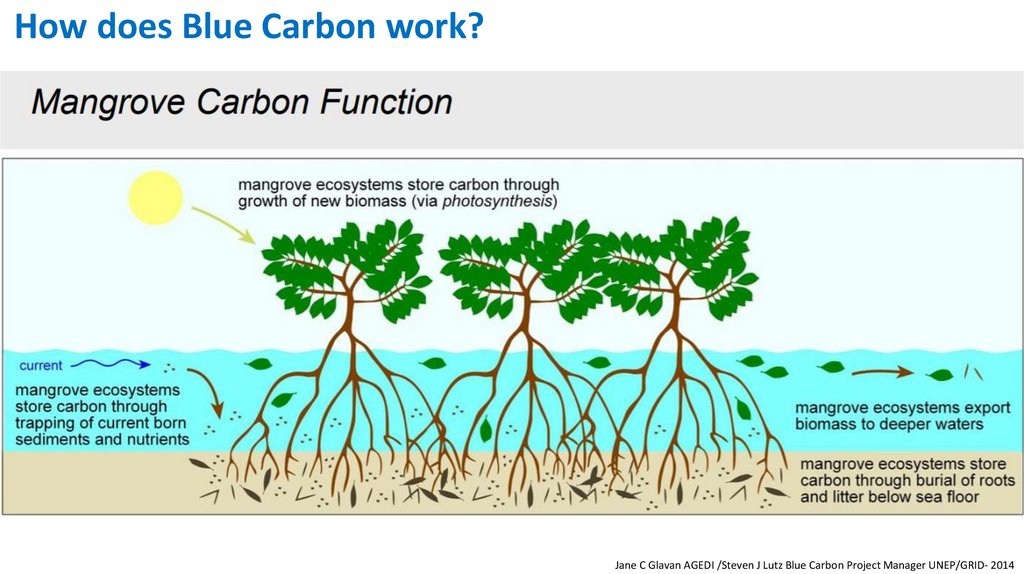
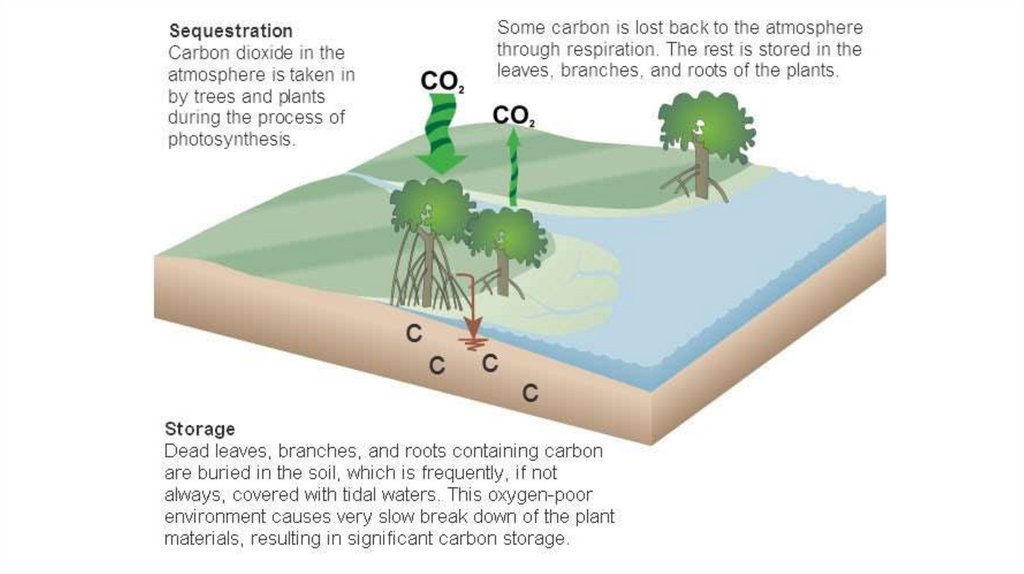
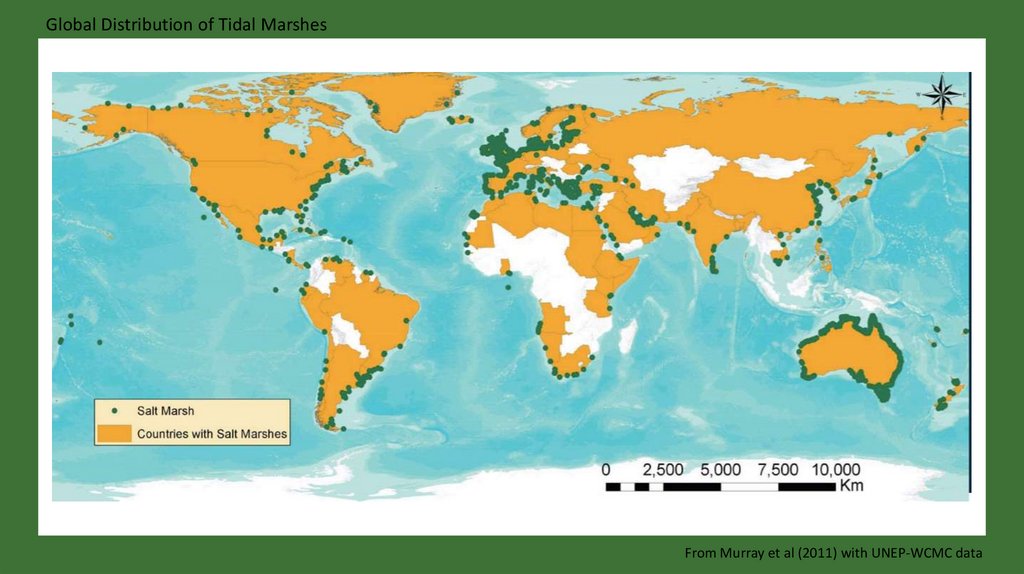
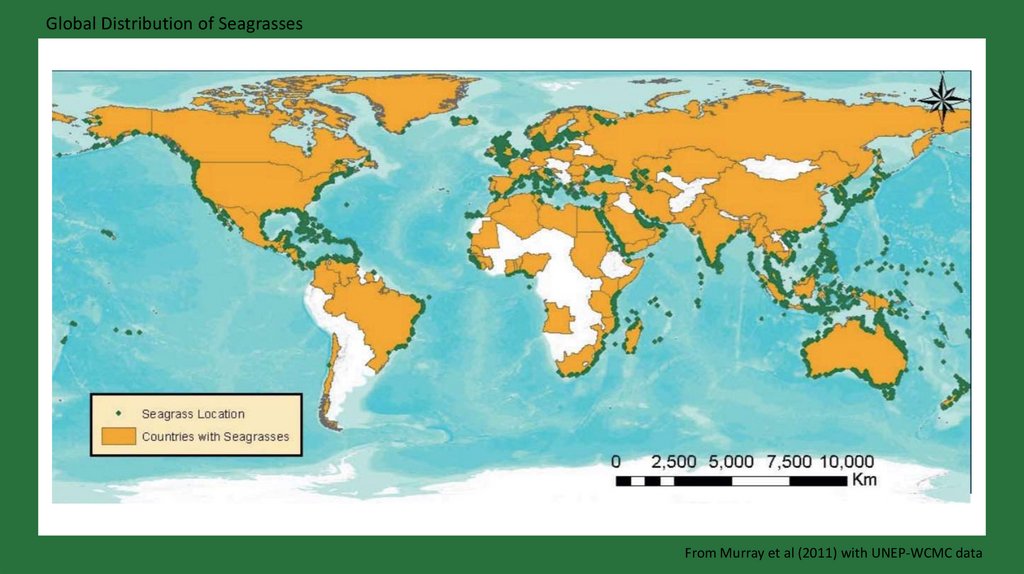
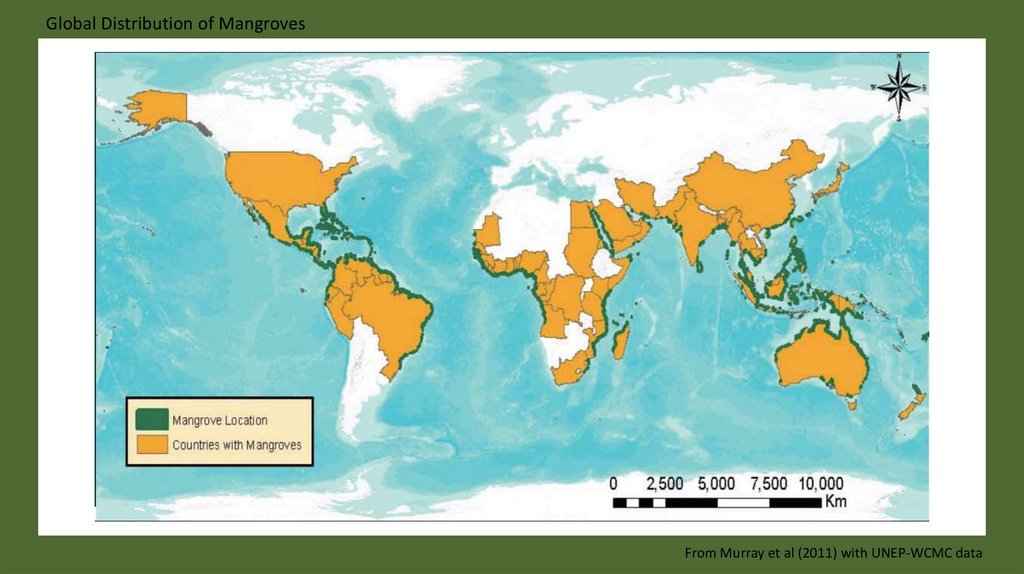
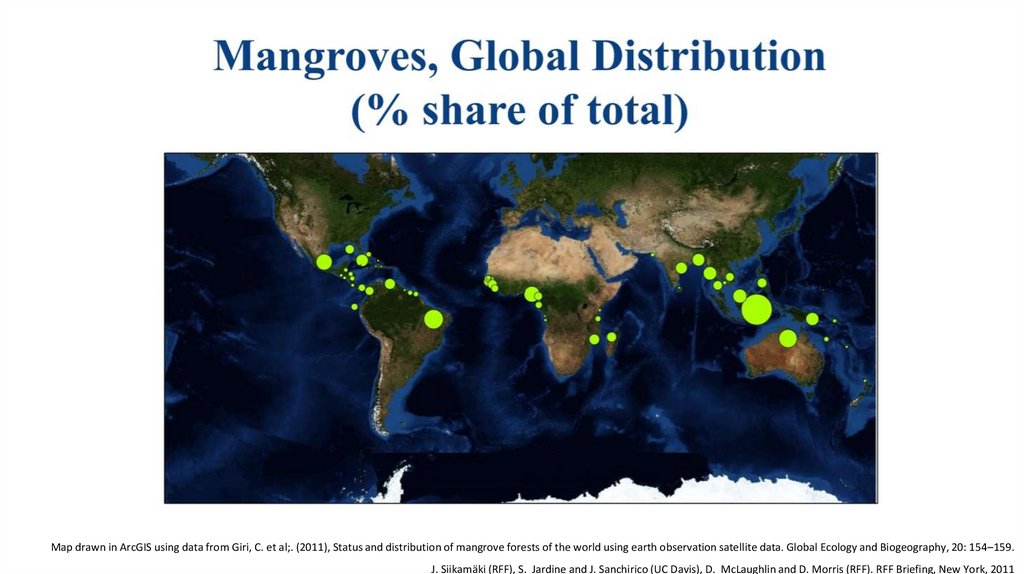
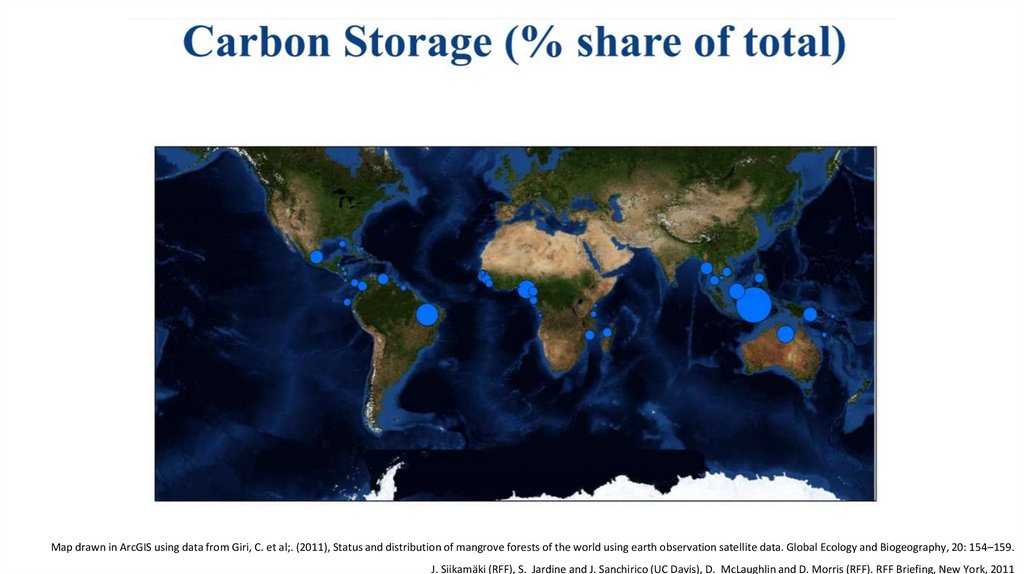

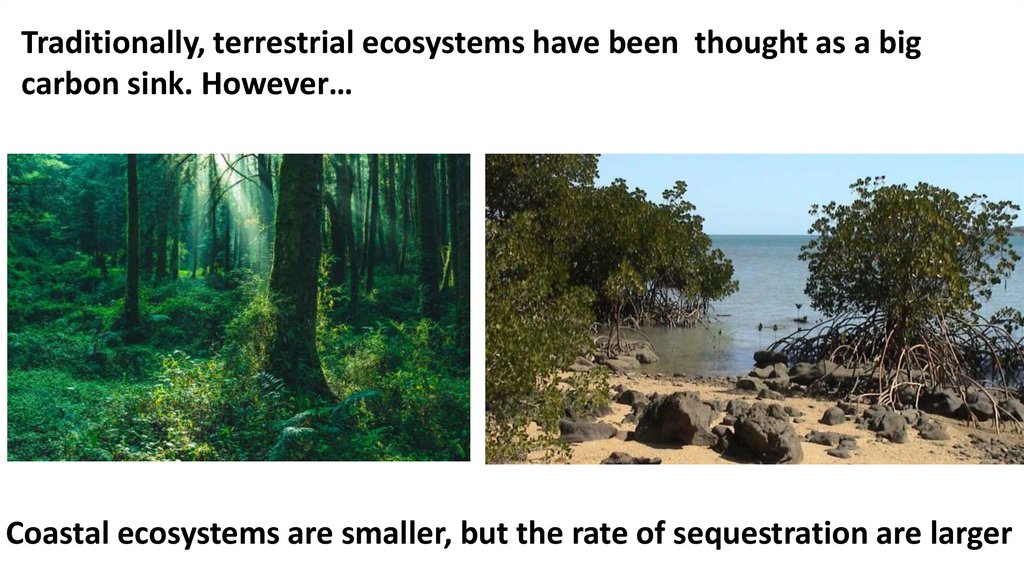
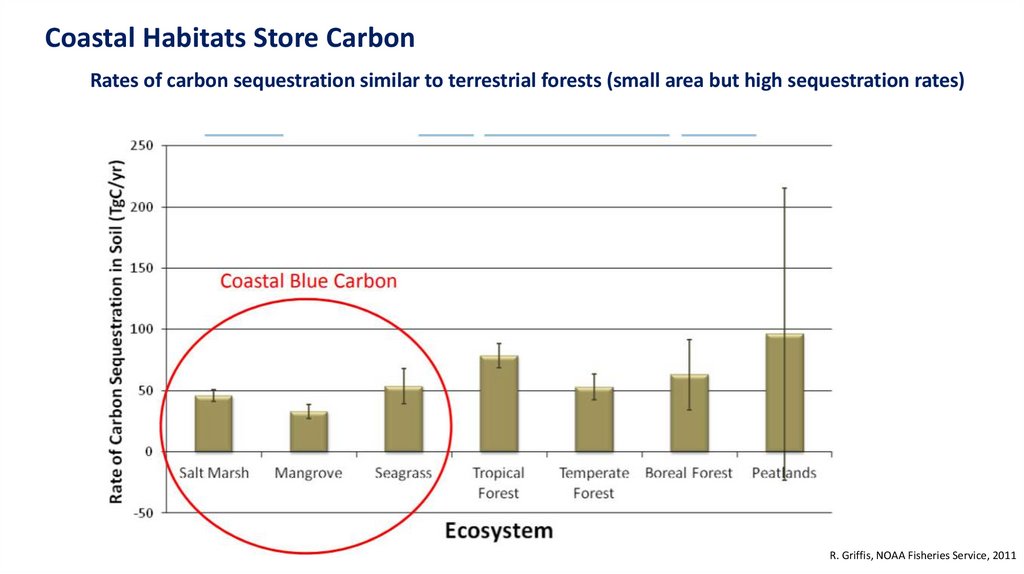

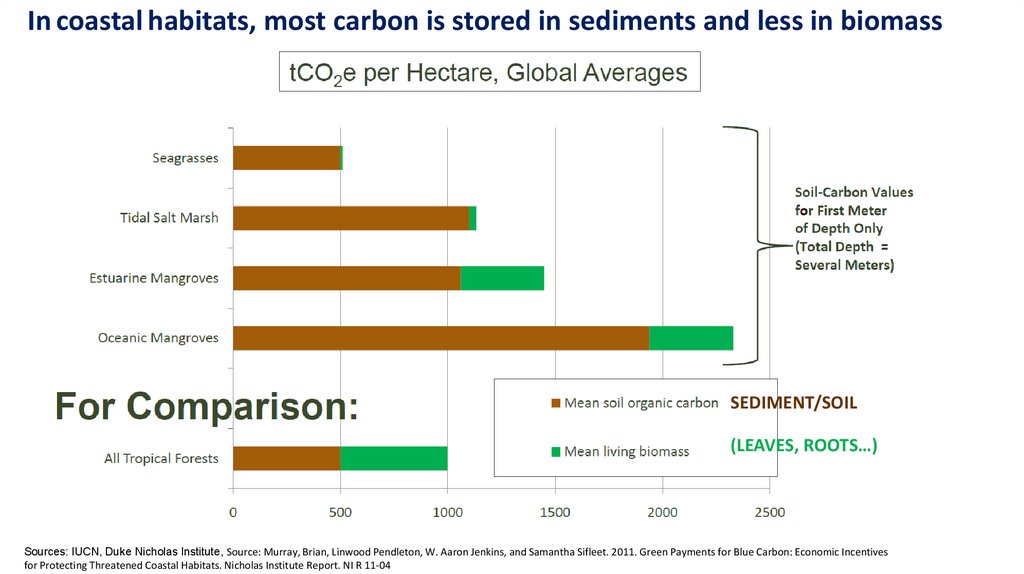
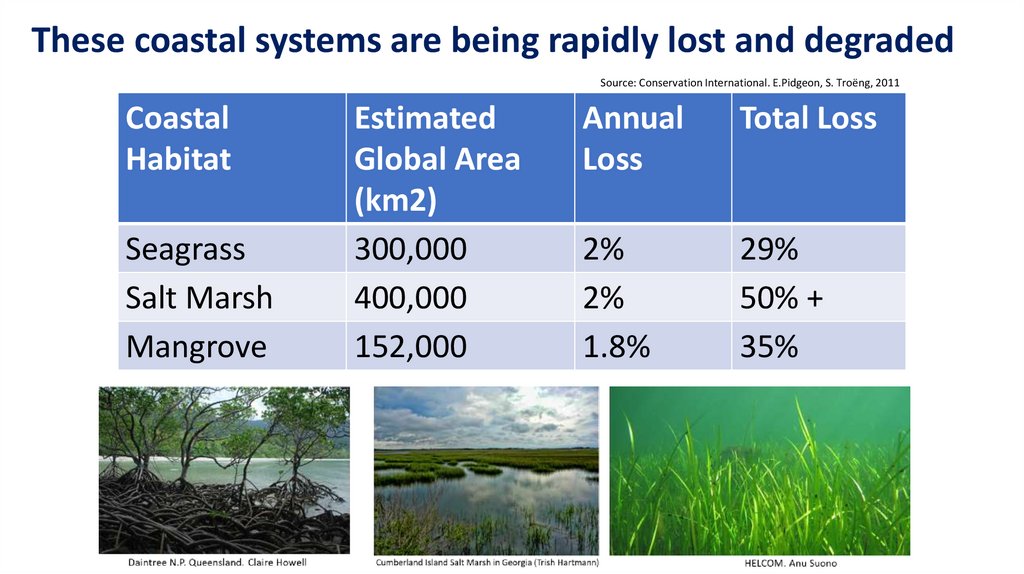

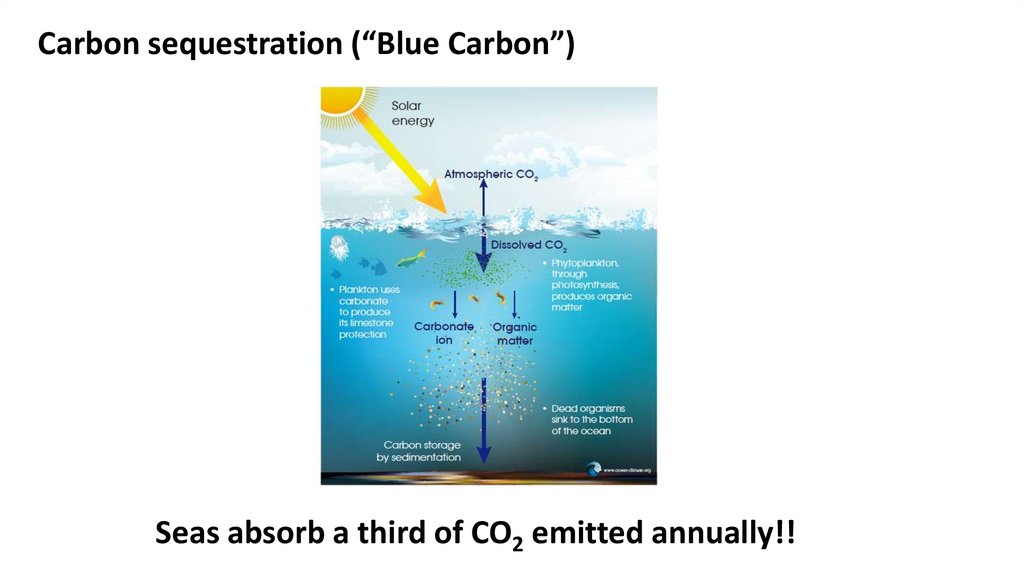

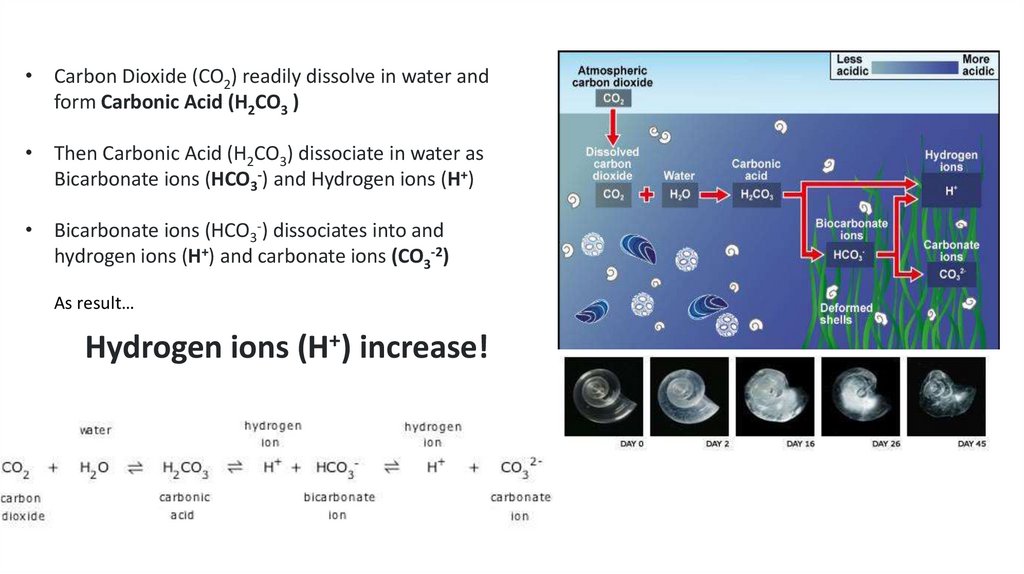

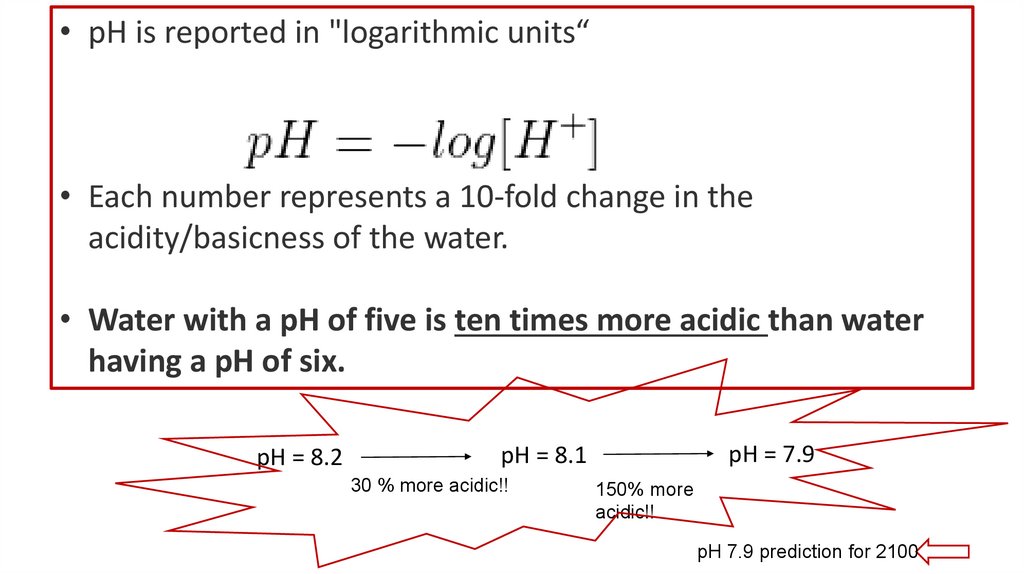
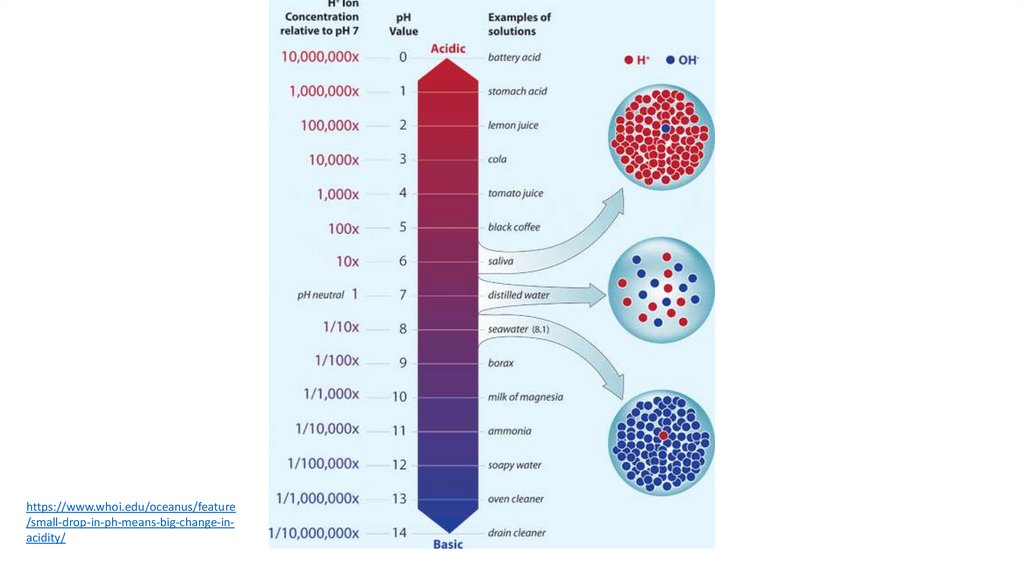
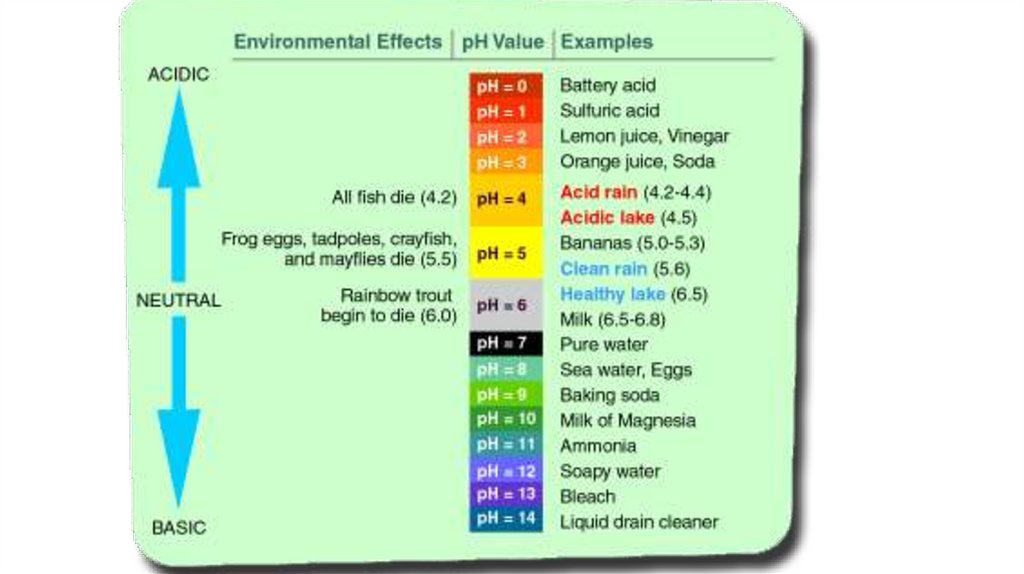

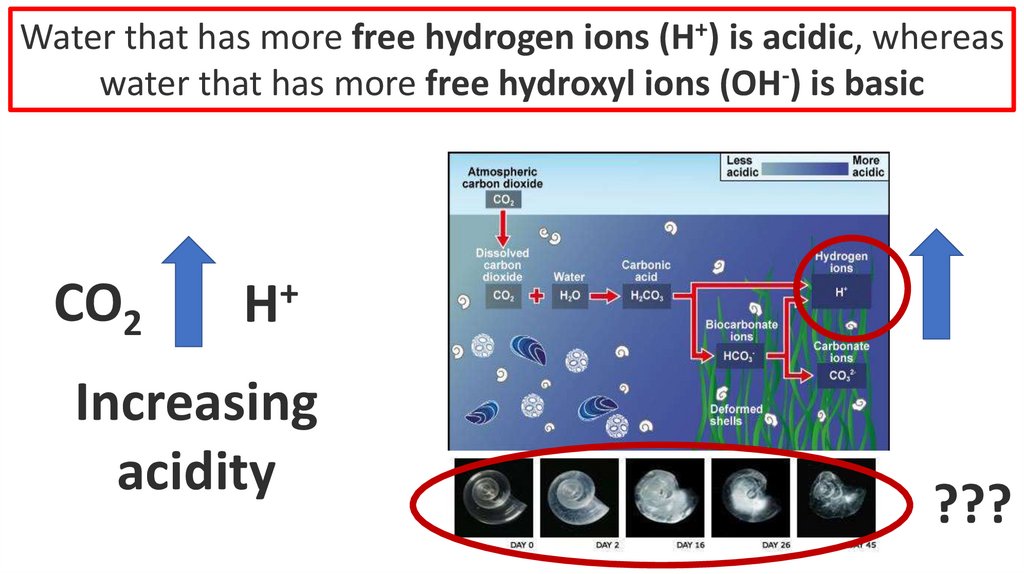
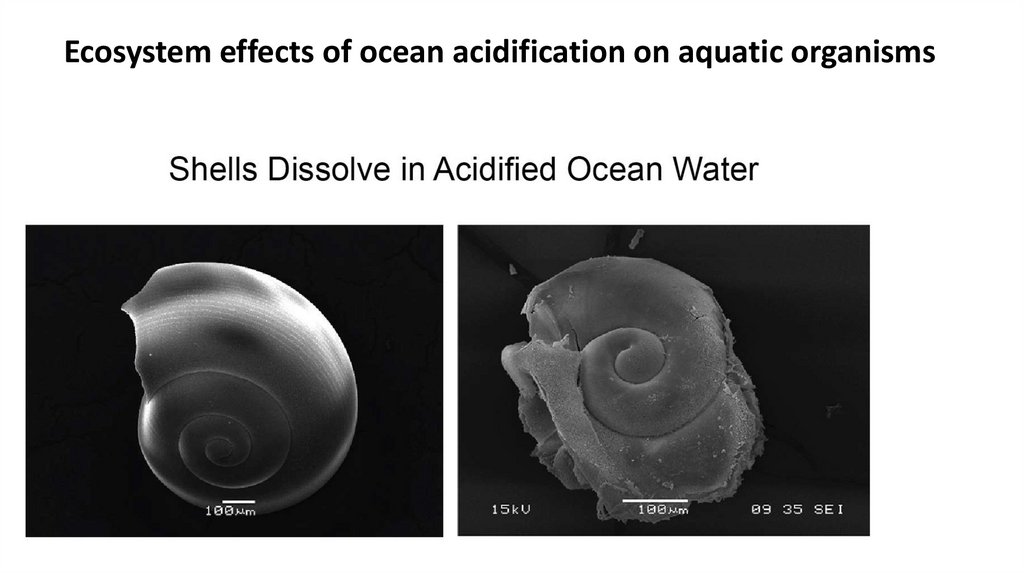
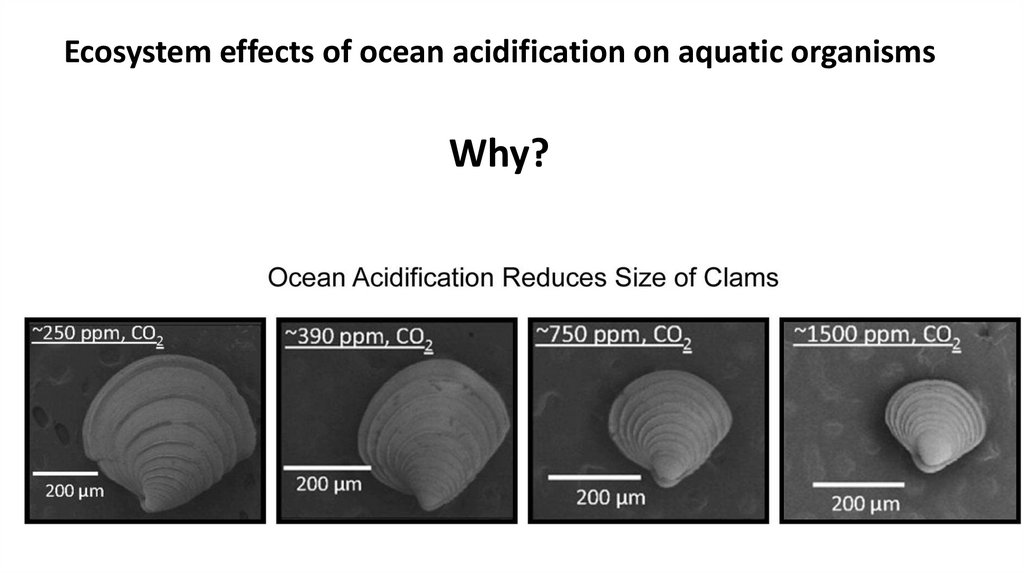
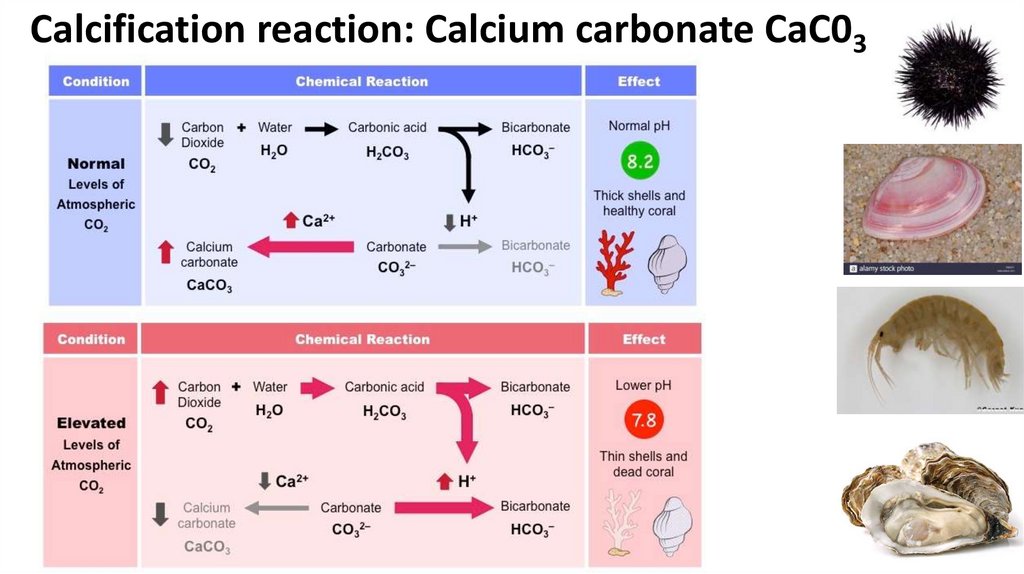


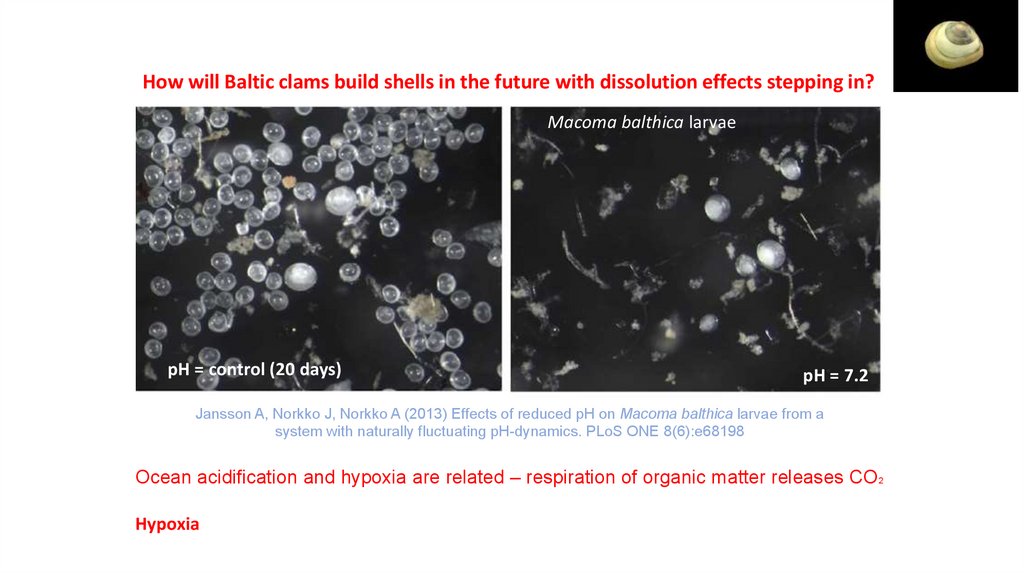

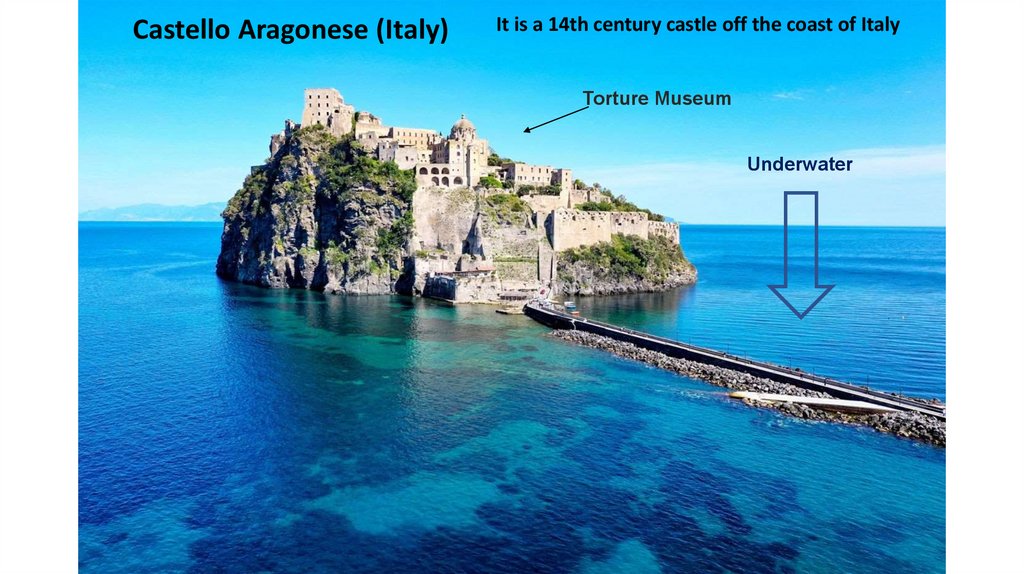
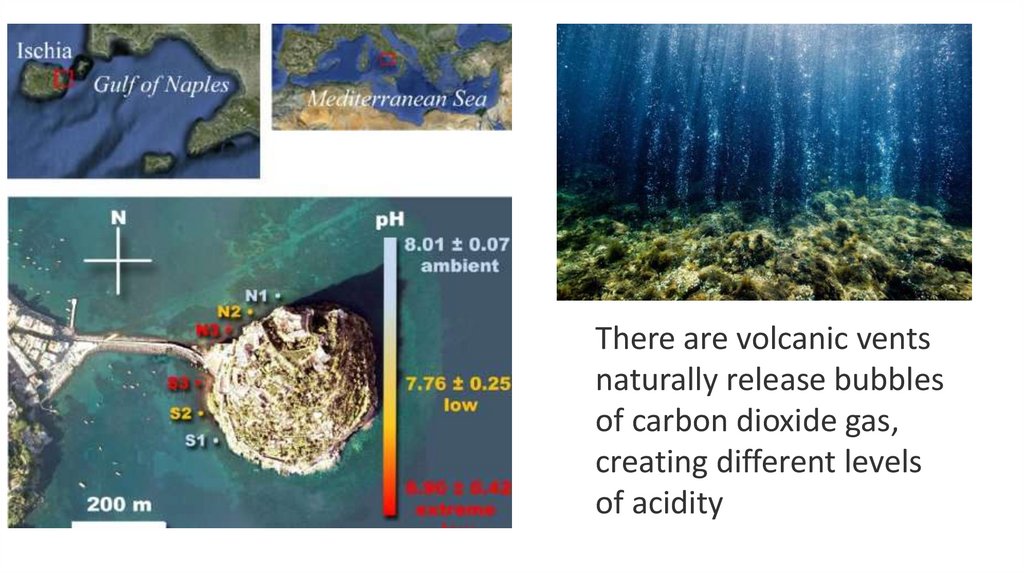

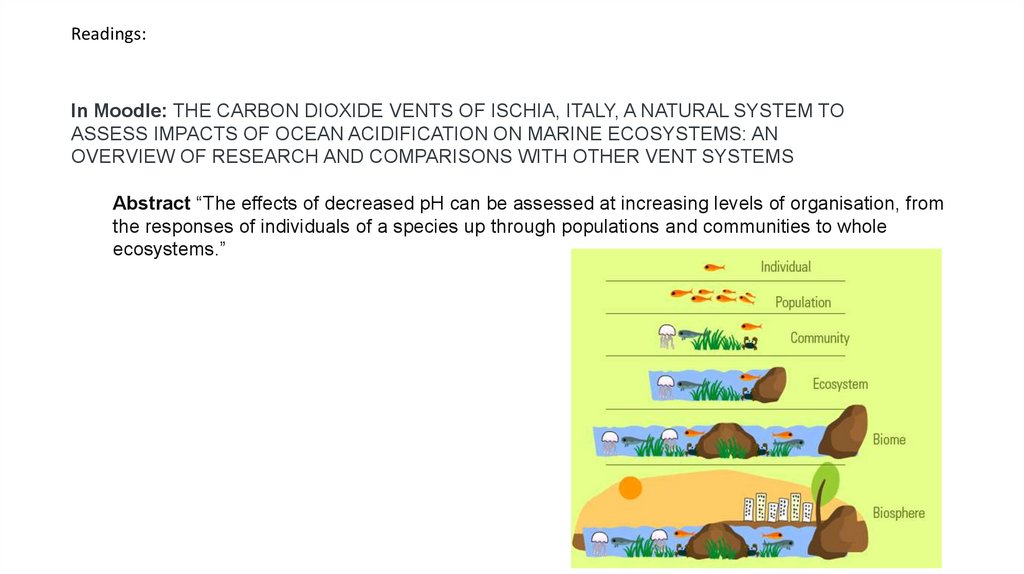
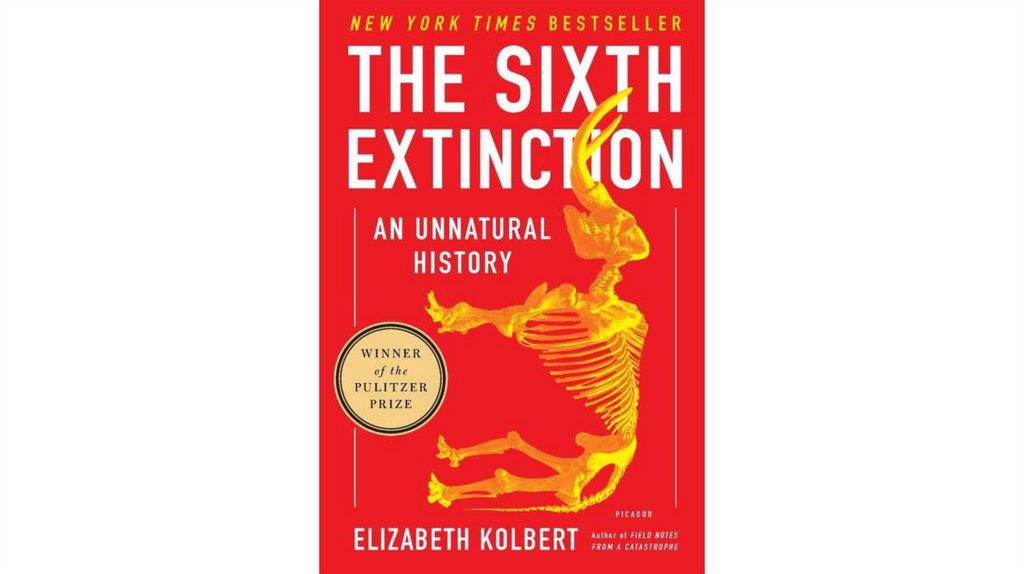
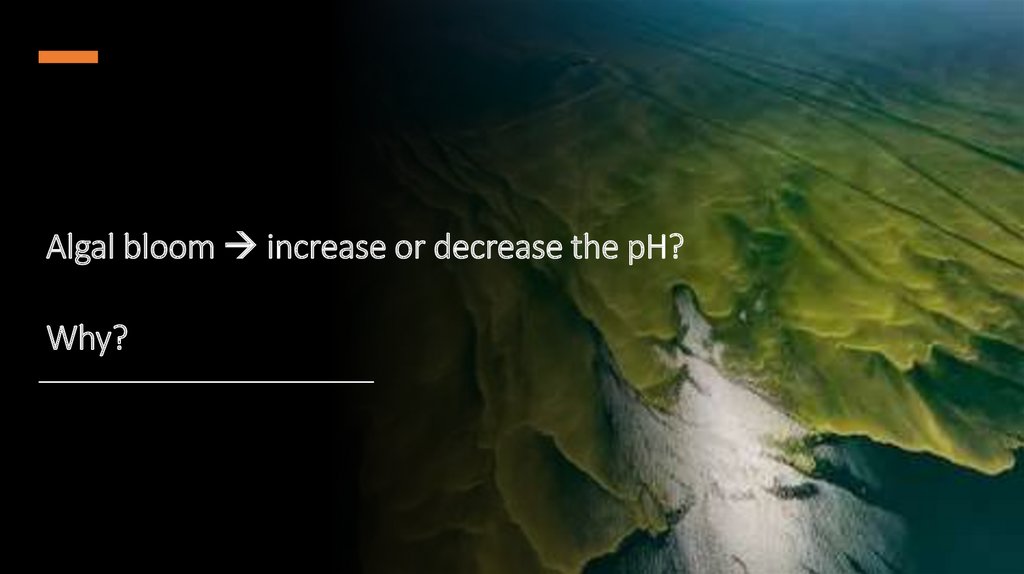
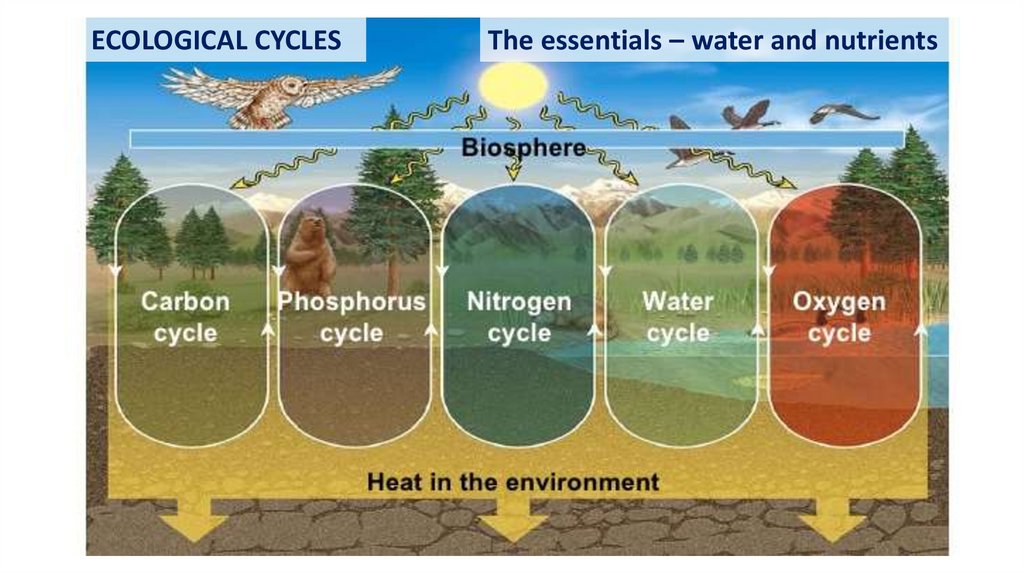
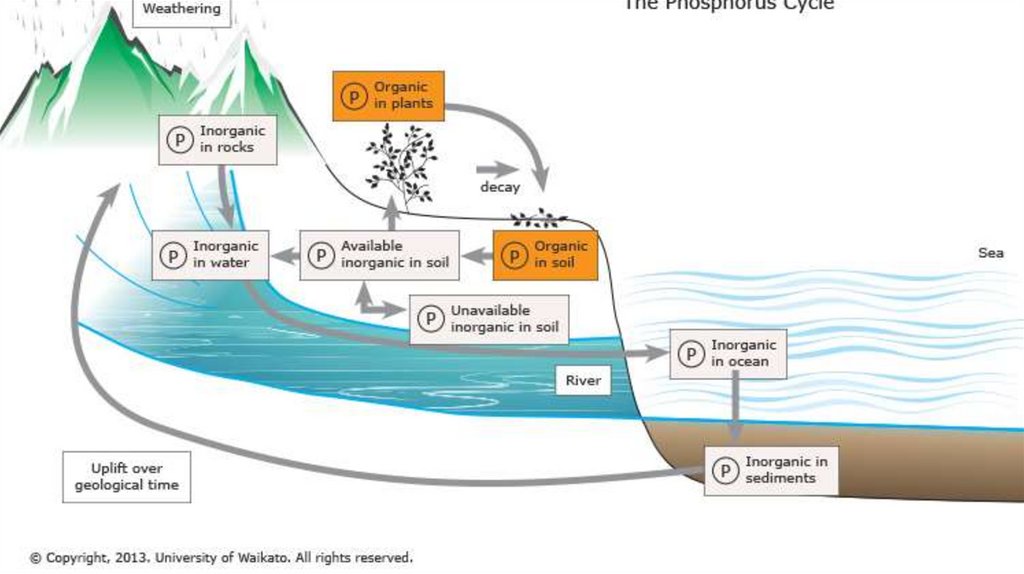
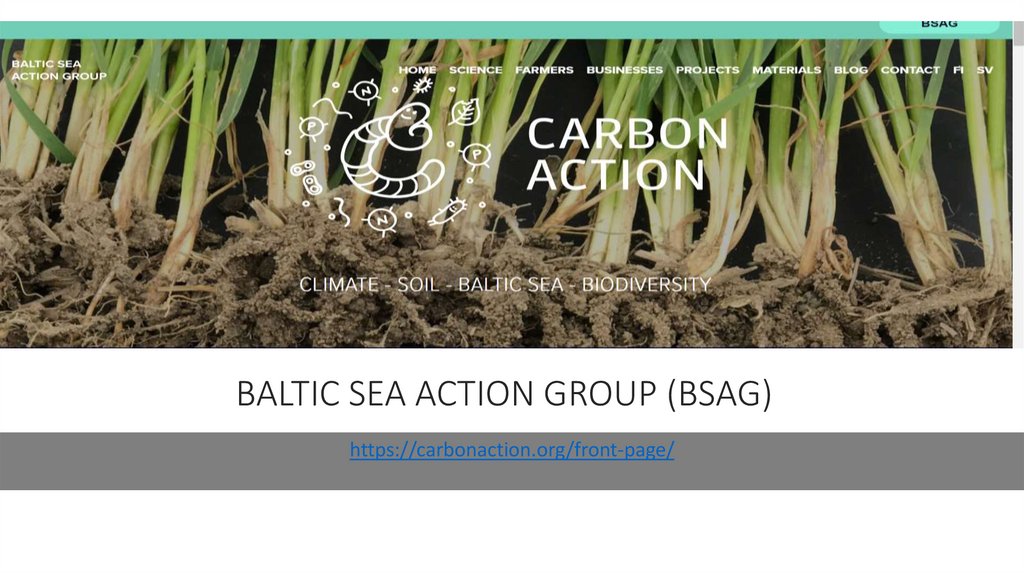
 ecology
ecology








